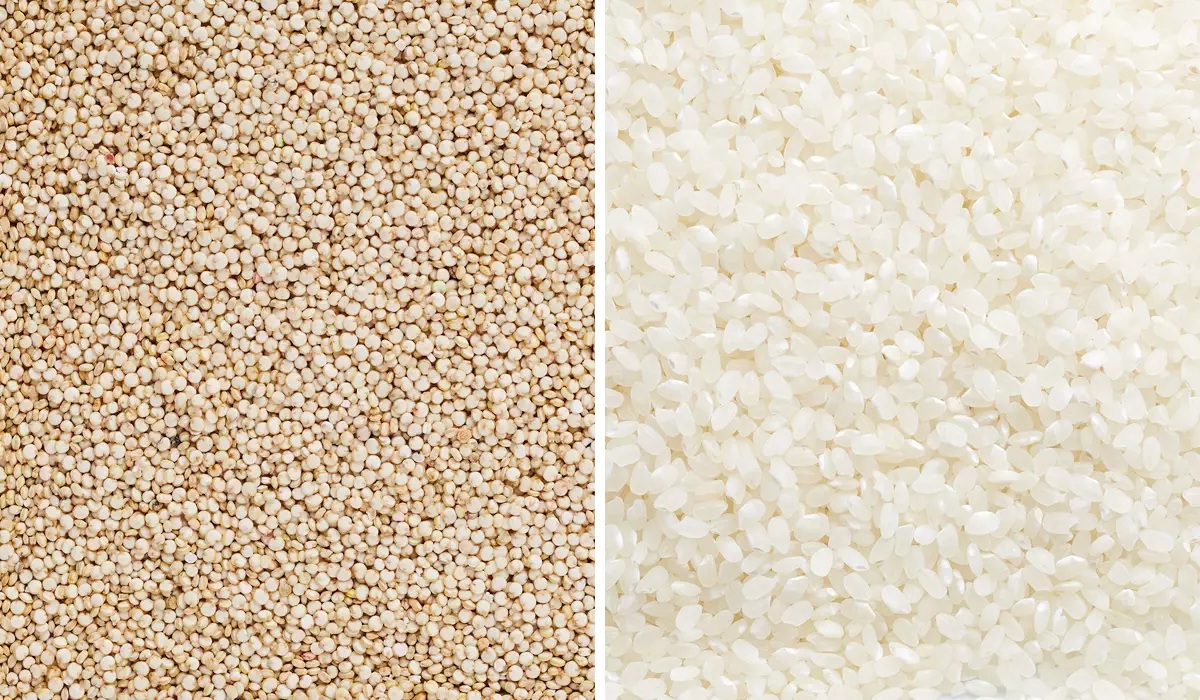uinoa and rice are two staple grains that have been consumed for centuries, each offering unique nutritional benefits and culinary versatility. In this comprehensive guide, we will explore the health benefits of quinoa and rice, comparing their nutrient profiles, potential health effects, and considerations for incorporating them into your diet.
Quinoa The Nutrient Powerhouse
Quinoa is a pseudo-cereal native to the Andean region of South America, prized for its exceptional nutritional profile and versatility in cooking. Unlike traditional grains like rice, quinoa is a complete protein, meaning it contains all nine essential amino acids necessary for human health. This makes quinoa an excellent plant-based protein source for vegetarians, vegans, and individuals looking to reduce their meat consumption. Additionally, quinoa is high in fiber, vitamins, and minerals, including manganese, magnesium, phosphorus, and folate. Its impressive nutrient density makes quinoa a valuable addition to any diet, offering benefits for heart health, digestion, and overall well-being.
Rice The Staple Grain of Many Cultures
Rice is one of the most widely consumed grains worldwide, serving as a staple food in many cultures and cuisines. While rice may not boast the same protein content as quinoa, it provides a significant source of carbohydrates, which are the body’s primary source of energy. Additionally, rice is naturally gluten-free, making it suitable for individuals with celiac disease or gluten sensitivity. Depending on the variety, rice can also contain essential nutrients such as B vitamins like thiamine and niacin, as well as minerals like iron and selenium. However, unlike quinoa, rice is not a complete protein and may need to be paired with other protein sources to ensure adequate amino acid intake.
Health Benefits of Quinoa
Complete Protein
Quinoa is one of the few plant-based foods that contain all nine essential amino acids, making it a valuable protein source for vegetarians and vegans. Protein is essential for muscle repair, immune function, and overall health.
High Fiber Content
Quinoa is rich in dietary fiber, which supports digestive health, regulates blood sugar levels, and promotes feelings of fullness and satiety. Consuming fiber-rich foods like quinoa may reduce the risk of chronic diseases such as heart disease, diabetes, and certain cancers.
Nutrient Density
Quinoa is packed with essential vitamins and minerals, including manganese, magnesium, phosphorus, and folate. These nutrients play vital roles in bone health, energy metabolism, and cell function, supporting overall health and well-being.
Gluten-Free
Quinoa is naturally gluten-free, making it an excellent alternative for individuals with celiac disease or gluten intolerance. It can be used in place of gluten-containing grains like wheat, barley, and rye in recipes such as salads, soups, and pilafs.
Health Benefits of Rice
Energy Source
Rice is a rich source of carbohydrates, providing a quick and efficient source of energy for the body. It is often consumed as a staple food in many cultures, serving as the primary source of calories in meals.
Gluten-Free
Like quinoa, rice is naturally gluten-free, making it suitable for individuals with celiac disease or gluten intolerance. It can be enjoyed in various forms, including white rice, brown rice, and specialty rice varieties like basmati and jasmine.
Low in Fat
Rice is naturally low in fat and cholesterol, making it a heart-healthy choice for individuals looking to reduce their saturated fat intake. Consuming whole grains like brown rice may help lower the risk of heart disease and improve cholesterol levels.
Versatility
Rice is incredibly versatile and can be used in a wide range of dishes, including stir-fries, pilafs, sushi, risottos, and desserts. It serves as a neutral base that complements a variety of flavors and ingredients, making it a staple ingredient in cuisines around the world.
Considerations for Consumption
Diversity
Incorporating a variety of grains, including quinoa and rice, into your diet ensures you receive a wide range of nutrients and benefits. Experiment with different grains and grain-based dishes to keep your meals interesting and nutritious.
Portion Control
While quinoa and rice offer numerous health benefits, it’s important to practice portion control to avoid excessive calorie and carbohydrate intake. Pay attention to serving sizes and balance your plate with a variety of vegetables, proteins, and healthy fats.
Preparation Methods
Choose healthier preparation methods for quinoa and rice, such as steaming, boiling, or baking, rather than frying or deep-frying. These methods help retain the nutritional value of the grains while minimizing added fats and calories.
Whole Grains
Opt for whole grain varieties of rice, such as brown rice, black rice, or wild rice, whenever possible. Whole grains contain more fiber, vitamins, and minerals compared to refined grains like white rice, providing additional health benefits.
Conclusion
Quinoa and rice are both nutritious grains that offer unique health benefits and culinary versatility. While quinoa stands out for its complete protein content, high fiber, and nutrient density, rice serves as a staple energy source in many cultures and cuisines worldwide. By incorporating a variety of grains into your diet, you can enjoy the diverse flavors, textures, and nutritional benefits they provide. Whether you’re cooking up a hearty quinoa salad or a comforting bowl of rice, both grains offer delicious and nutritious options for meals that nourish the body and satisfy the taste buds.
- Sweet and Guilt-Free: My Delightful Experience with JustCBD UK’s Sugar-Free CBD Gummies - August 6, 2024
- Embark on a Cosmic Flavor Adventure: My Review of Melo’s THC Beverages! - May 20, 2024
- Benefits of Chickweed Supplements - April 2, 2024

